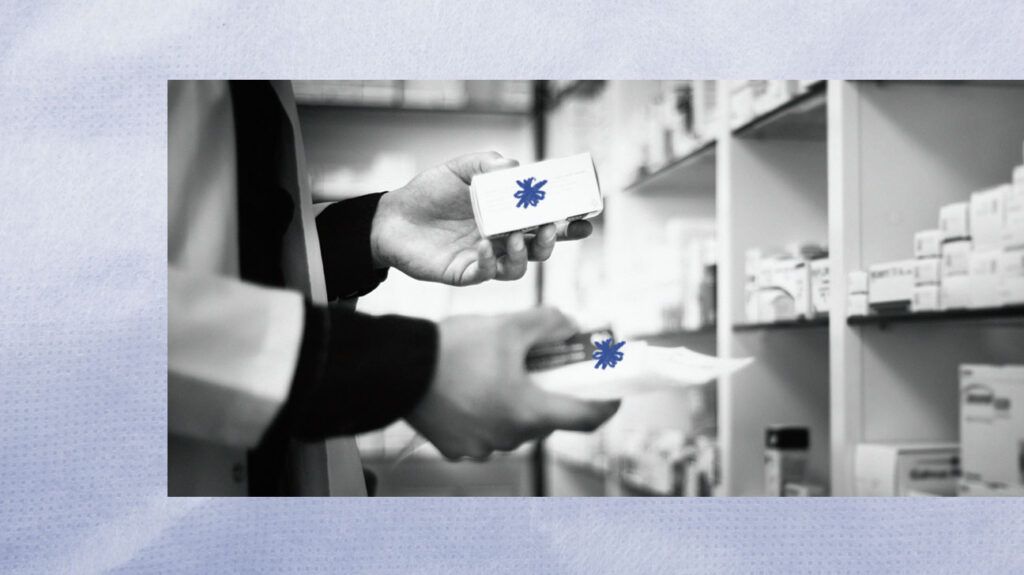Compounded drugs are custom-made medications by a licensed pharmacist or pharmacy technician. They alter ingredients, drug form, or dosage amounts to create a medication tailored to an individual’s specific needs.
Compounded medications can be especially helpful for people with allergies to specific ingredients and those who have trouble swallowing pills.
However, the Food and Drug Administration (FDA) does not test or approve these medications, and there are certain risks.
Read on for more information about compounded drugs, their purposes, and more.

Unlike commercially prepared medications that the manufacturer produces in large quantities, compounded drugs create personalized formulas.
The pharmacist or pharmacist technician can adjust the dosage, strength, or ingredients of the medication to meet the individual’s specific requirements.
Research suggests that between 1% and 3% of medication prescriptions are compounded drugs, and the number is growing.
Some examples of compounded drugs include:
- acne creams
- psoriasis creams
- pain medications
- cancer treatments
- medications for Alzheimer’s and Parkinson’s
During the COVID-19 pandemic, compounding pharmacies helped meet the increase in demand for hand sanitizers, surface disinfectants, and certain medications showing potential for treating the infection.
Types
There are two main categories of compounded drugs:
- Sterile compounded drugs: The pharmacist prepares intravenous (IV) injections, infusions, and eye medications using strict techniques to ensure their sterility.
- Non-sterile compounded drugs: These require less stringent techniques to prepare oral medications, topical creams, and suppositories.
Compounded drugs can help some people adhere to their medication.
Many people find medication adherence difficult for various reasons. For example, if a child does not like the flavor of a medication, they will typically refuse to take it. Or if an older adult has trouble swallowing, they may not take their daily pills.
Here are some ways compounded drugs help with medication adherence:
- Providing age-appropriate dosing: Pediatrics need different medication dosages than adults, and compounding can help ensure they receive safe and effective treatment.
- Making child-friendly forms: To help children take their medications, a doctor may compound their drugs into friendly forms such as lollipops or chewable gummy bears.
- Reducing the number of medications: Compounding medications may provide individualized drug combinations that combine several medications into a single form.
- Simplifying application: Compounding drugs, e.g., pain medications, into transdermal patches can offer better pain management.
- Addressing swallow difficulties: Making medications into oral disintegrating tablets, rectal suppositories, or changing the thickness of oral liquids can help those who have difficulty swallowing.
- Making user-friendly packaging: A pharmacist can repackage medications to help older adults who have difficulty opening containers with lids, using blister packets, or drawing up appropriate amounts of liquid.
- Addressing allergies and intolerances: Many commercial drugs contain dyes, sweeteners, preservatives, milk products, nuts, and other allergens that individuals cannot tolerate.
- Treating rare diseases: Medications for rare diseases are often difficult to obtain, and individuals with rare diseases sometimes rely on compounded drugs for treatment.
In general, compounded drugs are safe when a person purchases them from a reputable pharmacy. However, because they are not subject to the FDA’s rigorous manufacturing and testing regulations, there
Poor compounding practices can result in contaminations or inaccurate dosage amounts, which can lead to injury or death.
For example, in
Compounded drugs
However, the FDA does regulate compound practices through a combination of federal and state pharmacy laws. The FDA also inspects compounding facilities to ensure they meet certain quality standards.
In
While a certain level of compounding is common in most pharmacies and hospital pharmacies, not all have the equipment to perform more complicated forms of compounding.
Only about 7,500 out of 56,000 pharmacies in the United States specialize in compounding.
Federal law permits licensed pharmacists in state-licensed pharmacies, federal facilities, or physicians to compound medications.
Compounding can also occur in outsourcing facilities, which are subject to stricter quality standards, current Good Manufacturing Practices (cGMP), and FDA inspections.
There are
- 503A compounding pharmacies: These pharmacies compound medications to fulfill prescriptions written by a healthcare professional.
- 503B compounding pharmacies: These pharmacies can fulfill prescriptions, compound medications in large amounts, and sell them to hospitals and doctor’s offices.
If a person feels they would benefit from a compounded drug, the first step is to talk with their primary healthcare professional or pharmacist. They may have reputable resources to suggest.
It is also important for the individual to check with their insurance provider to understand their coverage for compounded medications. They can also ask if there are preferred compounding pharmacies within their network.
Several online directories, including the Alliance for Pharmacy Compounding and the Professional Compounding Centers of America websites, list the location of compounding pharmacies.
The cost of compounded drugs can vary significantly depending on various factors.
Factors may depend on include:
- ingredients of the medication
- complexity of the formulation
- quantity of the medication
- pharmacy location and overhead costs
- insurance coverage
If an individual has specific questions about their drug costs, it is a good idea to discuss this with their medical professional.
They can also inquire about discounts, as some pharmacies offer discounts for cash payments.
Lastly, they can contact their insurance provider to understand coverage for compounded medications.
Why are compounded drugs not FDA approved?
Compounded drugs are not approved by the FDA because they are patient-specific preparations made to meet their individual needs. However, the FDA does regulate compounding practices and performs regular inspections.
What is the difference between compounded and manufactured drugs?
Compounded drugs are medications a pharmacist or physician custom-makes to meet a person’s specific needs. Manufactured drugs are produced in large quantities.
Compounded drugs are custom-made medications created by pharmacists or physicians to meet an individual’s needs. These medications do not receive FDA approval in the same way mass-produced medications do. However, compounding practices are still regulated to ensure quality and safety.
Young children who need special dosing, people who have trouble swallowing pills, and those with allergies to ingredients in commercial drugs can benefit from getting compounded drugs.
To find a compounding pharmacy, it is a good idea to talk with the individual’s medical and insurance providers for recommendations.


